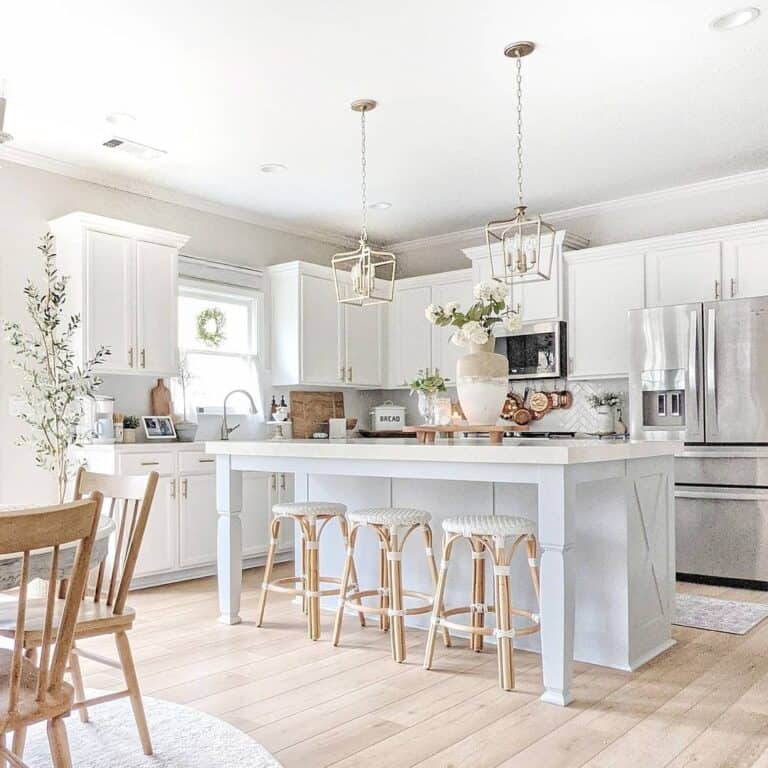A Guide to Picking the Perfect Legs For Kitchen Island for Your Home
Choosing the suitable legs for your kitchen area island is a nuanced choice that impacts both the functionality and aesthetic charm of this main space. As you think about these elements, it ends up being apparent that the right legs can change not just the look of your kitchen area however additionally its functionality for years to come.

Comprehending Cooking Area Island Legs
When choosing legs for a cooking area island, it's crucial to comprehend their aesthetic and useful functions in the overall layout. The legs offer as a vital support system, ensuring stability and longevity for the island, which frequently operates as an office, dining location, or gathering place. As a result, the choice of material and building method should be robust adequate to endure day-to-day usage and prospective wear.
Along with their architectural duties, legs contribute substantially to the island's visual appeal. They can boost the kitchen area's style, whether with standard, contemporary, or eclectic layouts. The elevation and percentage of the legs are also vital factors to consider; they should balance with the island's kitchen counter height while making sure comfortable seating for those making use of the space.
Moreover, the leg layout can affect the general flow of the cooking area. Open, airy leg designs can create a feeling of lightness, while solid, substantial legs may share a more based and secure aesthetic - Legs For Kitchen Island. Understanding these aesthetic and practical facets will assist home owners in making educated options that complement their cooking area's design and boost its usability
Popular Styles and Products
The selection of legs for a cooking area island includes a variety of prominent designs and materials, each offering special attributes that can improve both capability and looks. Amongst one of the most popular designs are modern, rustic, and traditional. Contemporary legs commonly feature sleek, minimal layouts that highlight simplicity and tidy lines, making them excellent for contemporary kitchen areas. Rustic designs, on the various other hand, embrace all-natural elements and usually showcase reclaimed wood or distressed coatings, adding warmth and appeal to the room. Standard legs generally show elaborate details and workmanship, improving timeless kitchen layouts.

Elevation and Security Considerations

The legs of the kitchen area island need to supply appropriate assistance, making sure that the framework can stand up to everyday usage without wobbling or changing. Product choice plays a substantial role in security; metal legs, for instance, often tend to provide better toughness compared to timber.
Matching Your Cooking Area Aesthetic
Choosing the ideal legs for your cooking area island goes past capability; it additionally plays a considerable role in the overall aesthetic of the room (Legs For Kitchen Island). When choosing legs, think about the design style of your kitchen area.
Color is one more important variable. Legs that enhance or comparison with your island's surface area and surrounding cabinets can his explanation produce visual harmony or striking prime focus. For instance, pairing dark timber legs with a light marble kitchen counter can include deepness and passion. In addition, take into consideration the coating of the legs; matte, glossy, or textured finishes can significantly influence the general feel of the kitchen.
Installment and Maintenance Tips
Installing kitchen area island legs requires cautious focus to detail to make certain both stability and visual appeal. Utilize a stud finder to situate wall studs if you are connecting the legs to a wall surface or utilizing braces for included support.
When protecting the legs, make use of top notch screws and, if required, timber adhesive for additional strength. For steel legs, ensure that you are using ideal anchors and tools to prevent damages to your floor covering. It is recommended to look for levelness after installment, making adjustments as required to avoid wobbling.
Clean the legs with an ideal cleaner, staying clear of unpleasant products that might scrape the surface. By complying with these installation and maintenance tips, you can ensure that your cooking area island legs continue to be both visually appealing and useful.
Verdict
In conclusion, selecting the ideal legs for a cooking area island demands careful consideration of elevation, stability, and aesthetic compatibility. Eventually, thoughtful leg choice plays an essential duty in elevating both the practicality and design of the kitchen area area.
When selecting legs for a kitchen island, it's vital to understand their practical and visual functions in the total style. Open, ventilated leg designs can develop a sense of Website lightness, while strong, substantial legs may communicate a much more based and steady visual. The legs of the kitchen island should give ample assistance, ensuring that the framework can hold up against day-to-day usage without shifting or wobbling.Mounting cooking area island legs needs mindful focus to information to guarantee both security and aesthetic appeal.In verdict, choosing the suitable legs for a cooking area island necessitates careful consideration of height, security, and visual compatibility.